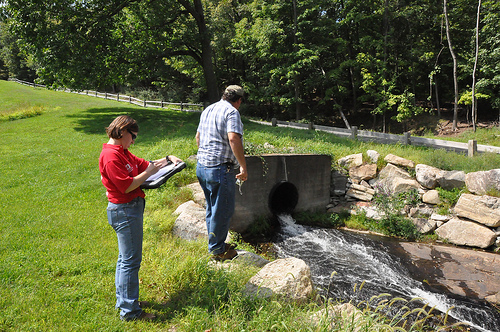
In New York, the Departments of Environmental Conservation (DEC), Health (DOH) and Law (DOL) are jointly responsible for ensuring that inactive hazardous waste disposal sites are appropriately cleaned up. The overall process follows these prescribed steps:
- Initial site investigation.
- Remedial investigation.
- Feasibility study.
- Remedial plan construction.
- Cleanup work.
- Monitoring.
Initial site investigation is conducted by the DEC or DOH to determine if, in fact, hazardous substances are present at a given site and whether they’re present in sufficient quantities to represent a significant (class 2) threat to public or environmental health. Sites that receive a class 2 designation are eligible for inclusion on the National Priorities List, to become an EPA Superfund site.
The initial investigation can also be completed by potentially responsible parties (PRPs) such as site owners, in partnership with consulting engineers, chemists and geologists. Often public and private entities work together.
Remedial investigation starts when the presence of hazardous waste contamination is confirmed.
The goal of this step is to gather additional information to more clearly define current site conditions as well as current or potential level of threat from contamination. This information is then analyzed to identify which methods and technologies may be most effective in eliminating site-specific threats and to design an appropriate remediation plan.
Remedial investigation involves additional, more extensive field sampling and lab analysis to learn as much as possible about extent and exact nature of contamination at the site, to determine:
- Three-dimensional physical area involved.
- Migration pathways.
- Contamination level in soils, groundwater, surface water, air, plants or animals.
Although the DEC’s Division of Environmental Remediation takes the lead, the remedial investigation and resulting cleanup process can also include municipalities as well as private citizens. The Health Department participates to ensure human health issues are considered at every step.
Remedial investigation can take up to two years. The work is critical, because developing a complete, detailed picture of the problem serves as the basis for identifying the best solution.
